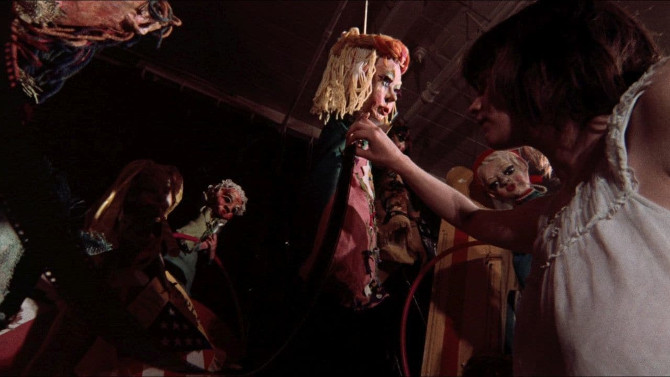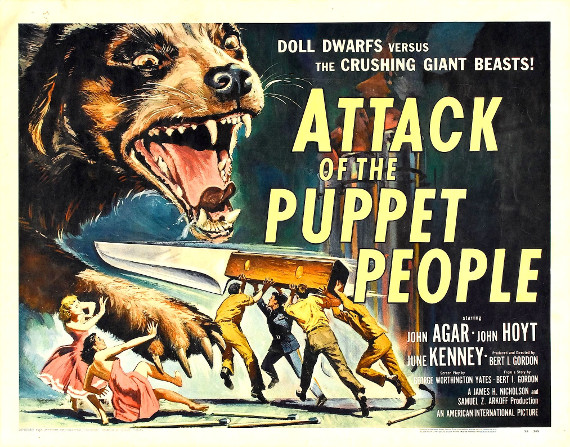A tradition that started last year, I decided that I would highlight some of the horror movies that did not meet my strict criteria (a rating of 7.0 or higher). . . as I realized that they are still entertaining films (horror fanatics may enjoy) that do not deserve to be left behind like the weakest link in a group of friends in a slasher flick – and that they are definitely worth a watch (just maybe not several re-watches).
As you can imagine, I’ve been powering through a plethora of horror features as we speed towards Halloween, and, instead of posting one massive selection of Missed the Bloody Cut reviews at the end of October, I have decided to break it into two parts.
Malatesta’s Carnival of Blood, a 1973 feature written by Werner Liepolt and directed by documentary filmmaker Christopher Speeth (neither made another film), is a kaleidoscopic descent into madness. . . a vague dream that becomes vivid nightmare. Made on a shoestring budget of one hundred thousand dollars (and only five grand for set design – most of the money went toward paying for the thirty-five millimetre film and cameras), Speeth decided to scrap the script halfway through, going for a less narrative driven story, focussing more on an atmospheric vibe (making for a visually stunning yet disjointed roller coaster ride).
Filmed at the famed Willow Grove Amusement Park in Pennsylvania, this thriving locale, that had been in business since the Victorian era, was finally feeling the strain (it would close soon after – in 1975), meaning that the crew was given the green light to shoot at the struggling park (though all of the interiors were filmed in a giant warehouse). Providing a mesmerizing setting, the tale, that feels like a combination of Carl Theodor Dreyer’s memorable 1932 silent film Vampyr, the cult classic Carnival of Souls (1962), and George A. Romero’s Night of the Living Dead (1968), follows a family that comes to the so-called carnival (others might call it a death trap), looking to help run the place while secretly sleuthing as they track their missing son (who they think disappeared there).
Combining a similar location to Souls, a cult of slow moving cannibalistic creatures (akin to Living Dead, though actually based upon “Sawney” Bean, a sixteenth century Scottish clansman who supposedly raised his children as thieving cannibals), and an almost silent driven gothic narrative (brilliant cinematography capturing dizzying colours, beautiful shadow and light, as well as certain aspects of German Expressionism), it never truly matches any of the three, though these elements do combine to make for a unique watch. It is also worth keeping an eye open for Hervé Villechaize (Fantasy Island; The Man With the Golden Gun), who has an interesting role as the malevolent Malatesta’s minion. A late night drive-in movie if I’ve ever seen one, this exploitative piece of seventies horror is not for unadventurous or mainstream horror fans.
Attack of the Puppet People, a 1958 B-movie, was rushed into production (by producer Bert I. Gordon and American International Pictures) after the success of the previous year’s The Incredible Shrinking Man, and it’s a shame. With Gordon also coming up with the premise for the story and directing, the picture features impressive special effects, camera tricks, and set design, the intriguing idea and unique visuals never truly making up for a bland story that rarely scares or surprises.
Sally Reynolds (June Kenney) is a lonesome lady, no family or friends, who finds a job at a doll-maker’s shop. The owner, Mr. Franz (John Hoyt), is a kindly old man, someone who is also filled with loneliness. His wife having left him, he puts all of his time into making his dolls, with the heart of his collection being certain life-like figurines stored in sealed glass containers – each one resembling a person that has touched his heart and creative spirit.
With loneliness being a major theme of the piece, travelling salesman Bob Westley (John Agar), once again, a man in a lonely job, strikes up a relationship with Sally, sticking around for a lot longer than he has ever done before, quickly sweeping her off of her feet. Proposing to her at the drive-in (a nice touch finds 1957’s The Amazing Colossal Man – which was also written/produced/directed by Gordon, playing on the big screen), Westley mysteriously disappears the next day, never picking up his fiancée for their trek back to his home base in St. Louis – the only trace of the gent is that he is Mr. Franz’s most recent detailed doll.
What lies behind the mystery? With a lack of suspects, you can probably guess. Yet, despite its bland story and this being considered a much weaker horror companion piece to The Incredible Shrinking Man, it is still quite watchable, the size-defying effects holding your attention for the picture’s short one hour, twenty-one minute runtime (I promise you, this actually helps). Funnily enough, the poster art for this film is more exciting than anything seen in the picture. . . its image of a group of puppet men thrusting a knife at a giant snarling dog as the mini-women cower to the side, grossly exaggerates the excitement onscreen – though it does make for one heck of a movie poster.
Psychomania (1973) is one trippy picture, a British post-hippie horror flick that revels in the growing counter-cultural motorcycle gang life found in the United States. Easy Rider, The Wild Ones. . . and Psychomania??? – you can see the one that deviates from the norm. Tom Latham (Nicky Henson) is the leader of a youth motorcycle gang called The Living Dead, teens who relish terrorizing their hometown and rural countryside – running people off the road, the death toll rising before things even take their horrific turn. In their off time, they have make-out sessions in cemeteries (maybe catch a frog or two between breaths – literally), and hang out at a Stonehenge like locale that is rumoured to have been formed by witches who broke their bond with Satan.
Latham, a wealthy hoodlum raised by his mother (Beryl Reid) – a woman with a connection to the spiritual world (one might call her a witch or Satanist. . .in any case, she has been known to make pacts with some sort of frog demon) and never aging (but already old) butler Shadwell (George Sanders), he is a psychopath who looks like a combination of Michael York and Mick Jagger. A further mystery finds his father having passed away eighteen years ago, the powerful room that did him in still locked for those nearly two decades.
Finding the secret within the room, Latham learns that there is a way to die and come back to life, fresher looking zombies who have their brains, brawn, and most importantly, are invincible. Convincing the rest of his group to take the plunge (not all of them will make it), the most hesitant is his girlfriend, Abby Holman (Mary Larkin).
With inept policemen, helpless civilians, and panicked drivers, The Living Dead wreaks havoc on the community. An all-out B movie, Psychomania is a bizarre mix of many genres – part Hammer horror flick, part George A. Romero zombie feature, while it all centres on this counter cultural motorcycle gang story. Sometimes, you may even think it is secretly flaunting itself as a comedy – some scenes, like when a giant baguette sandwich suddenly appears in Latham’s hands, or an excellent shot in which the camera pans around the morgue (we soon discover the police that we just saw alive have been murdered – somehow perfectly dressed, not a mark on them), each absurdist moment in a way feeling like a subversive Monty Python sketch.
Though it does feature some amazing stunts (in one interview, Henson tells of his stunt double driving through a brick wall, actually Styrofoam painted to look like brick – raining constantly, it was painted numerous times, so thick in the end that the motorcycle shot through it but the stuntman stuck to the wall like a Looney Tunes cartoon), a playful story, a decently built atmosphere and a quirky premise, it never truly succeeds in pulling out its horror elements, while its trippy premise is fun, but lacking. A cult classic to be sure, this one found itself very close to the cut line, just short of hitting the 7.0 rating.
So, enjoy this trio of horror B movies; as we all know, B is a perfectly respectable mark.




